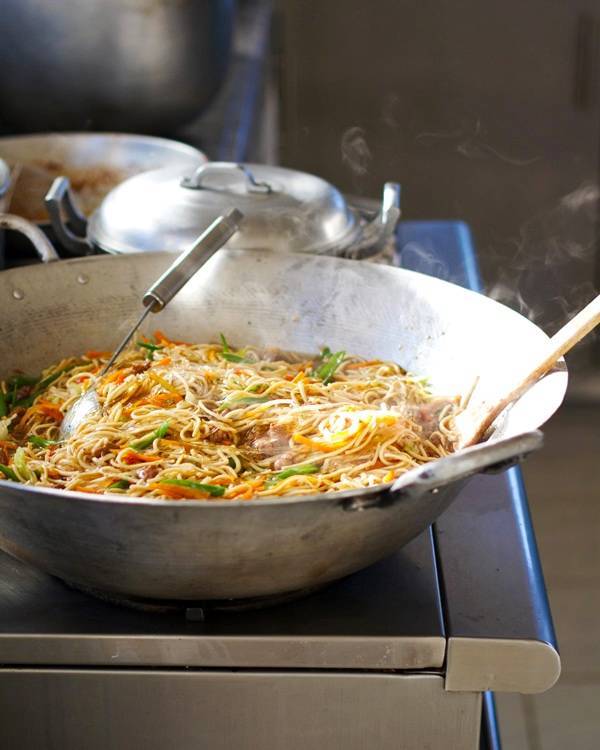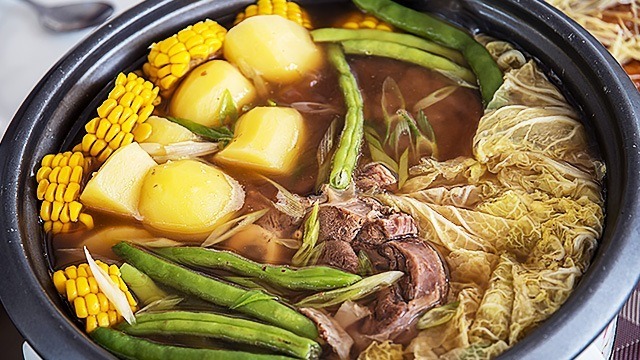Cook Flavorful Filipino Food Recipes for Every Occasion.
Cook Flavorful Filipino Food Recipes for Every Occasion.
Blog Article
Authentic Filipino Food Recipes to Try in the house
Checking out authentic Filipino food recipes offers a possibility to value the detailed tastes and cultural relevance behind each meal. Using fresh, neighborhood ingredients is necessary, as is welcoming common eating-- a hallmark of Filipino culture.
Popular Filipino Dishes
Filipino food flaunts a rich tapestry of flavors and practices, with over a loads famous meals that highlight the nation's varied social influences. One of the most well-known dishes is Adobo, a tasty stew typically made with chicken or pork, marinated in vinegar, soy sauce, garlic, and seasonings. Its tasty flavor profile makes it a staple in Filipino households.
One more cherished recipe is Sinigang, a sour soup typically made with tamarind, tomatoes, and different veggies. This recipe can feature pork, shrimp, or fish, and its rejuvenating taste is perfect for warm environments. For those with a craving for sweets, Leche Flan-- a creamy caramel custard-- offers as a popular dessert, showcasing the Filipino fondness for rich, wonderful tastes.
Kare-Kare, a hearty oxtail stew with a thick peanut sauce, in addition to the renowned lumpia, or springtime rolls, better exhibit the selection discovered in Filipino cuisine. Each meal not just offers one-of-a-kind preferences however additionally informs a tale of regional components and historic impacts, making Filipino food a vibrant representation of its society and heritage.
Important Active Ingredients for Filipino Cooking
The significance of Filipino cooking exists in its necessary components, which function as the structure for the country's beloved recipes. A variety of flavors and structures come together, showcasing the diverse cultural impacts that form Filipino food.
Trick ingredients consist of rice, the staple that accompanies almost every meal, signifying nutrition and area. Soy sauce, vinegar, and fish sauce (patis) are crucial for spices, conveying umami and depth to meals. Fresh herbs like cilantro and basil add fragrant freshness, while garlic, onion, and ginger give a robust taste base.
Healthy protein sources such as pork, poultry, and fish and shellfish are central to lots of recipes, frequently seasoned to enhance preference. Veggies like eggplant, bitter melon, and eco-friendly beans contribute crucial nutrients and equilibrium - Filipino food recipes. Coconut milk is an additional significant active ingredient, lending creaminess and a refined sweetness to different stews and treats
Lastly, calamansi, a citrus fruit, uses a refreshing flavor that raises meals and beverages alike. Together, these ingredients produce the lively and rich tapestry of tastes that define Filipino cuisine, making it both soothing and unique. Understanding these fundamentals is vital for anyone wanting to duplicate genuine Filipino dishes at home.
Step-by-Step Dish Guide

Beginning by preparing your active ingredients. For Adobo, chop the meat right into uniform pieces and marinate it in soy sauce, vinegar, garlic, and bay leaves for at the very least 30 minutes. Next off, heat check oil in a pan and sauté the garlic and onions till aromatic, then include the marinaded meat, enabling it to brownish evenly.
For Sinigang, begin by boiling water in a pot and including my review here your option of meat. As soon as tender, incorporate tamarind paste or fresh tamarind for that signature sour flavor. Adhere to with vegetables like radish and kangkong, cooking up until just tender.

Tips for Authentic Taste
Typically, accomplishing authentic flavor in Filipino recipes depends upon the careful option and therapy of ingredients. Start with fresh, top quality produce, as the vibrancy of veggies and herbs considerably boosts the dish's total preference. Staples like garlic, onions, and ginger develop the aromatic structure for numerous recipes; utilizing them in proper proportions is important.
Choosing the best healthy protein is equally vital. Typical adobo typically employs poultry or pork, seasoned to absorb the marinade's complete taste. Furthermore, think about sourcing in your area produced or regional active ingredients, as they can offer authenticity that store-bought choices lack.
Food preparation methods likewise play an essential role. Slow-cooking approaches, such as braising or stewing, permit tastes to blend perfectly, while frying can include a satisfying texture. Do not neglect seasoning; making use of salt, fish sauce, or soy sauce at the best moments can boost a recipe significantly.
Offering and Enjoying Filipino Food
Cooking experiences are enhanced when Filipino food is served with attention to practice and neighborhood. The method of sharing meals is main to Filipino society, signifying unity and hospitality. When serving Filipino meals, consider making use of typical serveware, such as clay pots or bamboo baskets, which enhance the credibility of the experience.
Typically, Filipino meals are taken pleasure in family-style, with a range of recipes positioned at the facility of the table. This common technique motivates interaction and enables visitors to sample different tastes. A well-curated spread might include staples like adobo, sinigang, and lumpia, complemented by rice, which is a fundamental element of every meal.
Accompanying the useful source food with traditional condiments, such as soy sauce, vinegar, or chili paste, can elevate the eating experience, welcoming diners to tailor their plates to their preferences. Furthermore, integrating neighborhood drinks, like calamansi juice or tuba, can enhance the overall flavor account.
Final Thought

Report this page